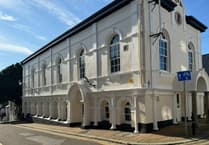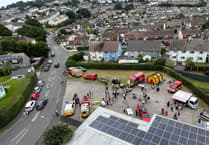An historic site in Saltash is set to benefit from a new partnership.
Historic England and Areas of Outstanding Natural Beauty (AONBs) have signed a joint statement to conserve and celebrate iconic historic sites.
In the Tamar Valley AONB, the Tamara Landscape Partnership Scheme team is working with Historic England to survey and develop reports for seven important historic sites including the Second World War Landing Craft Gridiron at Saltash.
Comprehensive surveys of their condition will be undertaken, and prioritised and costed repair or stabilisation intervention reports will be made available.
All seven sites are currently on the Heritage at Risk Register.An historic site in Saltash is set to benefit from a new partnership.
Historic England and Areas of Outstanding Natural Beauty (AONBs) have signed a joint statement to conserve and celebrate iconic historic sites.
In the Tamar Valley AONB, the Tamara Landscape Partnership Scheme team is working with Historic England to survey and develop reports for seven important historic sites including the Second World War Landing Craft Gridiron at Saltash.
The other sites are Gunnislake Clitters Mine, New Consols Mine, Okel Tor Mine, Gawton Mine, Holmbush Mine (Winsor Lane) and the Tamar Canal Lock.
Comprehensive surveys of their condition will be undertaken, and prioritised and costed repair or stabilisation intervention reports will be available by the end of March 2023.
All seven sites are currently on the Heritage at Risk Register and this work will move them closer to being removed from that register. The concrete gridiron at Waterside in Saltash was constructed on the shoreline for the United States Naval Advanced Amphibious Base unit which opened there in November 1943.
The gridiron, which is visible below the Tamar Bridge except at high tide, was utilised for the repair and maintenance of landing craft used in connection with D-Day.
The gridirons took the form of a series of parallel concrete piers running down a slight gradient into the River Tamar.
The structure allowed landing craft to be floated on at high tide and then repaired when the tide was out.
On the shoreward side of the gridiron’s southern four piers is a small raised quay.
The gridiron remained after the Americans left at the end of the Second World War, though a small part was removed with the construction of the Tamar Bridge in the late 1950s and early 1960s.
Today the historic site beside the river is protected as a scheduled monument.




